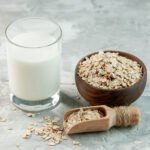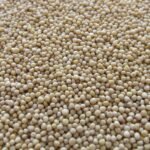Delve into the world of cinnamon, its historical roots, diverse culinary applications, notable nutritional value, and surprising health benefits.
Unraveling the Cinnamon Saga
Ever wondered where cinnamon comes from? It’s a spice that’s been adored for thousands of years, dating back to ancient Egypt where it was treasured like gold. Native to Sri Lanka, true cinnamon, or Ceylon cinnamon, is harvested from the inner bark of the Cinnamomum verum tree. But the cinnamon you often find on supermarket shelves is usually the Cassia variety, originating from China.
Used not only as a culinary delight, cinnamon was also an important part of traditional medicines and religious rituals. It was so highly prized, it was considered a suitable gift for monarchs and even gods!
The Culinary Canvas of Cinnamon
Cinnamon is a master of disguise in the kitchen. It adds depth and warmth to savory dishes, sweetens up baked goods, and gives beverages a comforting kick. You’ll often find cinnamon playing a starring role in spice mixes, such as garam masala and Chinese five-spice.

Not just confined to solids, cinnamon also adds a lovely layer of flavor to hot drinks like chai tea or mulled wine. Plus, let’s not forget the classic cinnamon roll – a perfect example of cinnamon’s ability to make our taste buds tingle!
Breaking Down the Nutritional Content of Cinnamon
While we all know cinnamon is a knockout in the flavor department, its nutritional prowess is often overlooked. This aromatic spice is a heavyweight when it comes to health benefits, thanks to the compound cinnamaldehyde, antioxidants, and anti-inflammatory properties.
Let’s take a closer look at what a teaspoon (2.6 grams) of cinnamon packs in:
| Nutrient | Value |
|---|---|
| Calories | 6 |
| Fat | 0.3g |
| Carbohydrate | 2.1g |
| Fiber | 1.4g |
| Sugar | 0.06g |
| Protein | 0.1g |
| Calcium | 26mg |
FAQs
What’s the difference between Ceylon and Cassia cinnamon?
Well, the differences are more than skin deep! Ceylon and Cassia cinnamon come from different species of trees. Ceylon, or ‘true’ cinnamon, has a lighter, sweeter flavor, and is more expensive. Cassia, or ‘common’ cinnamon, has a stronger flavor and contains more coumarin, a natural compound that can be harmful in large amounts.
How does cinnamon benefit health?
Oh, let me count the ways! Cinnamon is loaded with antioxidants, has anti-inflammatory properties, may improve sensitivity to the hormone insulin, and may lower blood sugar levels, among other benefits.
The Final Scoop on Cinnamon
From its exotic origins to its current status as a kitchen staple, cinnamon has come a long way. Its rich history and culinary versatility make it more than just a spice – it’s a global cultural phenomenon.
So, whether you’re sipping on a chai latte, enjoying a Moroccan tagine, or just sprinkling some on your morning oatmeal, remember: you’re not just adding flavor, you’re also packing in the health benefits. Now that’s a spice worth savoring!
Fun Facts about Cinnamon
1. The word “cinnamon” comes from the Greek word “kinnamomon,” which means sweet wood.
2. In ancient Egypt, cinnamon was used in the mummification process.
3. Cinnamon was once considered more precious than gold!
Source: ncbi.nlm.nih.gov




